For ease of discussion, medieval daggers have often been distilled down to just a handful of categories, named according to the general form of their hilts: quillon, ballock, rondel, and so on. This simplification can be misleading, though, as each category contains a staggering amount of variety in size, shape, construction, decoration, and other features. The set of weapons known as rondel daggers is a case in point. Named for the discs (rondels) that feature in their hilt, the form encompasses weapons large and small, plain and fancy, with one edge, two edges, or no edge, with rondels at one or both ends of the grip, and with a host of other differences. According to period art and surviving specimens, it was a popular form in its heyday, which stretched from the 14th century into the 16th. While many examples had rondels at either end of the grip, examples survive with a disc-shaped guard and pommels of other forms, including floral shapes, fishtail shapes, and wheel pommels among others.
The rondels themselves took many forms, varying in width, thickness, materials, construction, and decoration. In most cases, they were more than simple flat discs cut from sheets of metal. Some rondels were made up of stacks of metal and other materials like wood, creating a composite piece. Some were made of iron but were hollow to varying degrees; others sheathed wooden parts in metal.
Among surviving examples from the 14th century are two daggers that are quite different from one another. One, housed in a museum in Berlin, bears a longer single-edged blade. Its hilt consists of wooden rondels covered in iron. Its grip is of horn, with spiral grooves and iron studs. The other, found in the River Thames in London, rests in a private collection. Its blade is shorter, double-edged, and hollow-ground. It has a composite rondel at the base of the blade made of pieces of brass that originally surrounded an organic spacer (likely made of wood). Its pommel, also of brass, is of a flaring floral shape. Though their exact dates and places of origin are unknown, they illustrate very different versions of the rondel dagger form and are roughly contemporary with each other.
Overview
A veteran of one of the well-known production companies, Josh Davis creates historically accurate custom armour, weapons of many forms, and metal, leather, and woodwork under the Davis Reproductions banner in Minnesota. Having commissioned him for custom work in the past, I approached him to make me a version of the brass-hilted dagger found in the Thames. The current owner of the original dagger has published a handful of pictures and a set of measurements on their website, but not in enough detail or quantity for an exacting replica to be made. Josh used the available information in his making of this piece, creating a piece that is in the spirit of the original and is completely plausible for the era.
As always, Josh was communicative and sent progress pictures at various stages of the build. As with past commissions, his pricing and delivery times remain extremely attractive and I wouldn’t hesitate to commission future pieces from him. In fact, at the time of this writing, he was working on another piece for me.
Coincidence brought the steel-hilted dagger into my possession. This piece was commissioned by another customer, inspired by the piece in Berlin. That customer was selling the piece to fund another purchase and I jumped at the chance to pick this piece up for review. This piece is also not an exact replica, differing slightly in overall length (3/4 inch longer), blade width (a little wider), and weight (a fraction of an ounce less) when compared to the original. The original purchaser made the decision to have the grip done in stained wood rather than studded horn.
Brass-hilted dagger’s measurements and specifications:
Weight: 10.125 ounces
Overall length: 12 1/2 inches
Blade length: 8 1/4 inches
Blade width: 1 inch at base, tapering to 1/2 inch
Grip length: 3 inches
Guard width: 2 inches
Steel-hilted dagger’s measurements and specifications:
Weight: 10.125 ounces
Overall length: 16 1/2 inches
Blade length: 11 3/4 inches
Blade width: 1 inch at base, tapering to 3/8 inch
Grip length: 3 1/2 inches
Guard width: 1 9/10 inches
Replicas created by Davis Reproductions of Minnesota.
Handling Characteristics
Completely by coincidence, these daggers weigh exactly the same; their blades are also the same width. However, that is where any similarity ends. These are both effective weapons, but feel very different in the hand. On both, though, the hand locks comfortably and securely into place and the rondels between the grip and blade provide plenty of protection. Each blade starts around a quarter of an inch thick and tapers toward the point without wobbles or inconsistencies. Both blades are also sharpened to an appropriate level.
The brass-hilted dagger’s short length and solid pommel result in a weapon whose tip is highly maneuverable. The point of balance lies in the grip, giving it a solid feel. The short grip follows the original’s size and fits comfortably, whether held point-up or point-down. The thick, hollow ground blade would be devastating and durable in thrusts. While both edges are sharp, the length, blade cross-section, and mass distribution create a weapon that is perhaps biased more toward thrust than cut.
The steel-hilted dagger is longer, but its rondels are not solid metal, as on the original. On this piece, they are wood covered with steel: each wooden disc is sandwiched between two thin steel discs and is surrounded by a steel band. Obviously weighing less than solid steel, these lighter rondels push the balance point out onto the blade which results in a dagger that feels more authoritative in the cut. Its tip is still agile, though. With its longer reach and balance between cut and thrust, it is likely the more versatile weapon of the two. It also would work equally well with the point up, or held in the so-called “icepick” grip.
Fit and Finish
Both daggers are well-crafted, striking a good balance between modern expectations and period-acceptable evidence of hand-crafting. The finish on all the steel parts on both daggers is just a bit shinier than a satin finish, but is not a mirror polish. The result is attractive and should be easy to maintain.
The brass-hilted dagger is the more visually striking of the two. Part of that comes from the contrasting brass and steel parts found on the original as well as from the hollow ground blade. Other elements, such as the choice of black walnut for the spacer and the grip and scabbard decoration and color, were decisions made by Josh and me. All are executed well. The central rib of the blade is admirably straight on both sides. The hilt’s pieces fit tightly together and the brass parts are attractively finished in a matte finish. The composite rondel is nicely done, with a pair of rivets holding the brass and wood together. As on the original, it is decorated with a nine-pointed star, in this case within a circle and surrounded by some other decorative lines.
No scabbard was found with the original, so Josh created an excellent one using period features. The core is carved wood and fits the blade well. The leather cover, dyed an Oxblood color like the grip at my request, encases the rondel as is seen on some rondel dagger scabbards. Its surface is tooled with designs taken from a 14th century manuscript, the Hunting Book of Gaston Phoebus. The huntsman tooting his horn is a nod to my profession as a musician. A brass chape and leather thong complete the scabbard. Due to the weight of the hilt and the short blade, the thong is best used to tie the scabbard tightly to a belt rather than hanging it from one.
The steel-hilted dagger is less fancy, but is still elegant. The single-edged blade has a thick spine and is finished evenly. Both rondels are nicely done, showing smaller gaps between the steel parts than what appears on the original. The top rondel has a small button over which the tang is peened. The grip, of wood stained red, narrows as it goes toward the blade; it is carved with a series of grooves. The dagger was not ordered with a scabbard.
Conclusion
A few pieces of work by Davis Reproductions already reside in my collection, and both daggers reviewed here hold up to the impressions I formed of those earlier pieces. These daggers, like all of Josh’s work that I’ve seen, are high quality reproductions, capturing the look and feel of historical pieces. They are also solidly constructed and would make for sturdy, effective weapons. The daggers under review also serve as examples of the variety of work Josh can produce, as they very clearly differ from one another in every way except in their quality.
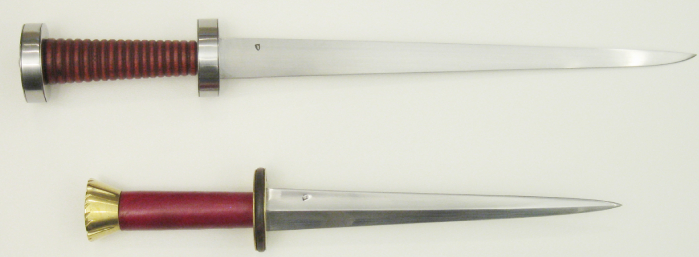

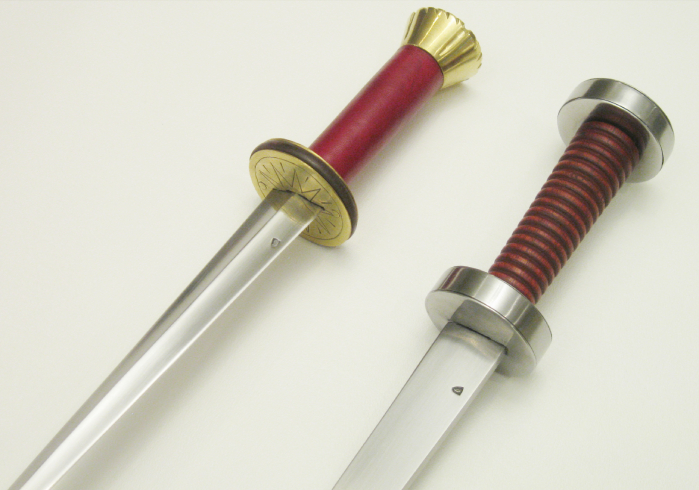
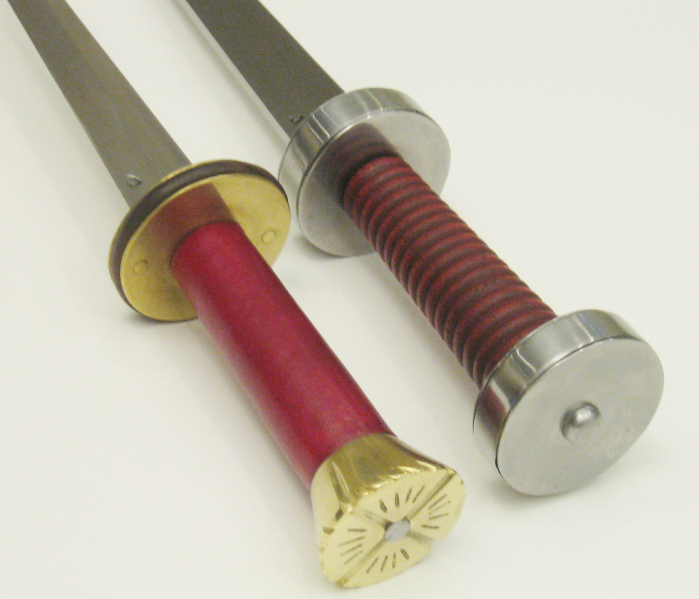
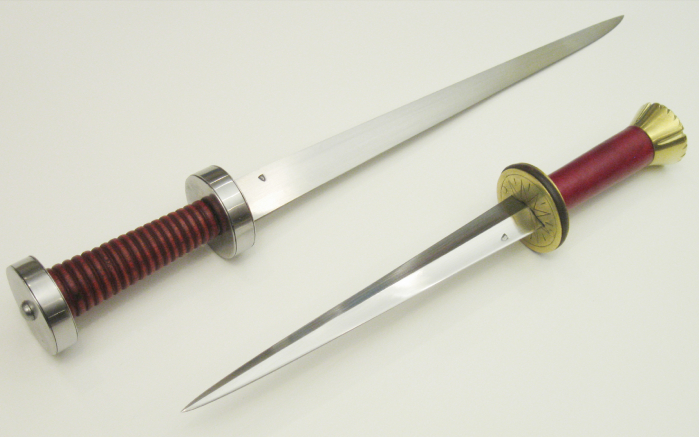
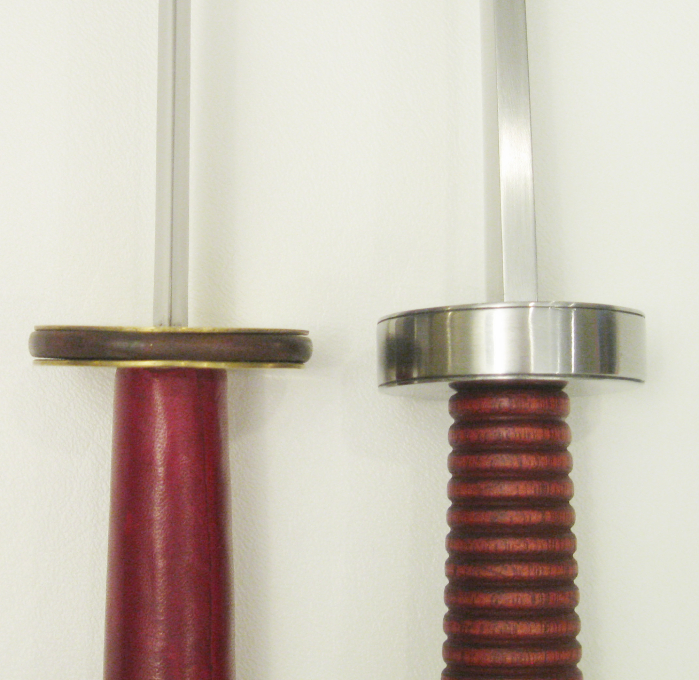
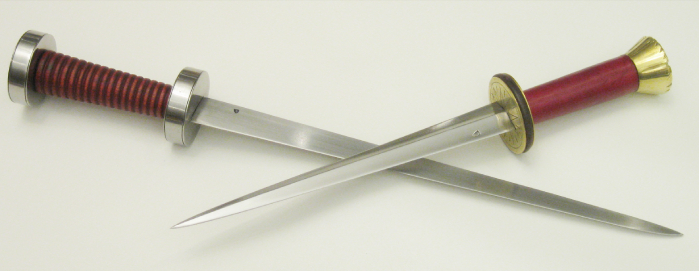

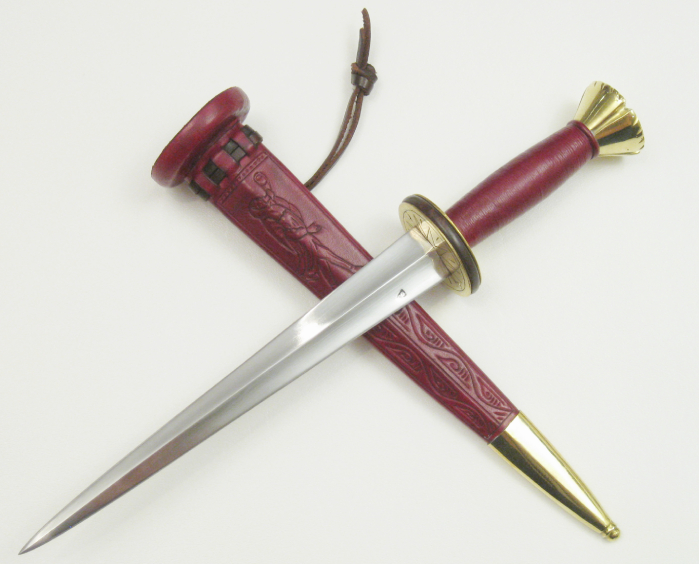
(pic taken after the grip and pommel were tweaked)
